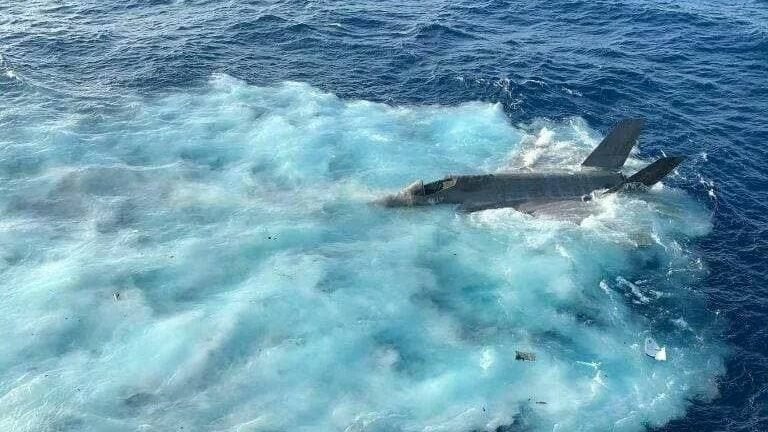China on Thursday asked the US to engage in actions that are conducive to regional peace after an American fighter jet crashed in the South China Sea.
“We urge the country concerned (US) to do things that are conducive to regional peace and stability, rather than flex muscles in the region,” Foreign Ministry’s spokesman Zhao Lijian told a news conference in Beijing.
Zhao said Beijing had noted reports about the crash of an F-35C warplane belonging to the US military on the deck of an aircraft carrier in the South China Sea, leaving seven people injured, this Monday.
“This is not the first time that the US has an accident in the South China Sea,” a Chinese Foreign Ministry statement quoted Zhao.
When asked by Anadolu Agency whether China would retrieve the wreckage of the F-35C, Zhao replied: “We have no interest in their aircraft.”
The US Navy said after the incident that an F-35C Lightning II, assigned to Carrier Air Wing (CVW) 2, had a landing mishap on the deck while USS Carl Vinson (CVN 70) was conducting routine flight operations in the South China Sea.
The wreckage has fallen into the water and the US Navy is engaged in recovery operations.
The pilot ejected safely and was recovered by a military helicopter. Seven sailors were injured, according to the US Navy.
The incident came a day after the US Navy Carrier Strike Groups, led by their flagships CVN 70 and USS Abraham Lincoln, began dual-carrier operations in the South China Sea on Sunday.
Warships involved in the joint operations will test enhanced maritime communication operations, anti-submarine warfare operations, air warfare operations, replenishments-at-sea, cross-deck flight operations, and maritime interdiction operations to strengthen maritime integrated-at-sea operations and combat readiness.
Besides ships and aircraft of the two carrier strike groups, over 14,000 sailors and marines will conduct coordinated surface and air operations in a complex maritime environment to “demonstrate the US Indo-Pacific Command Joint Force’s ability to deliver a powerful maritime force,” according to Defense Visual Information Distribution Service.
“Operations like these allow us to improve our combat credible capability, reassure our allies and partners, and demonstrate our resolve as a Navy to ensure regional stability and counter malign influence,” said Rear Adm. J.T. Anderson, commander of Carrier Strike Group 3.
Source: AA









